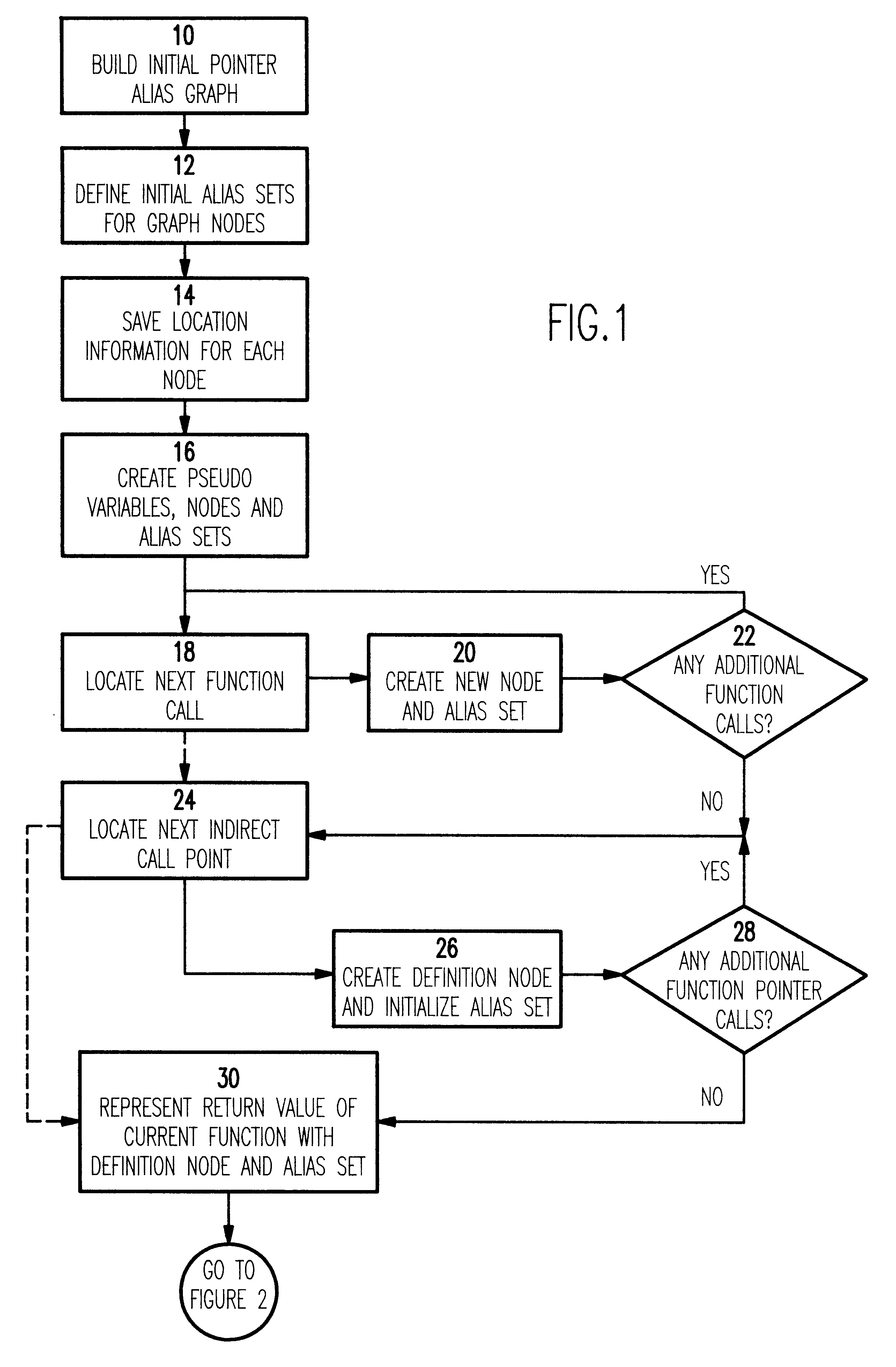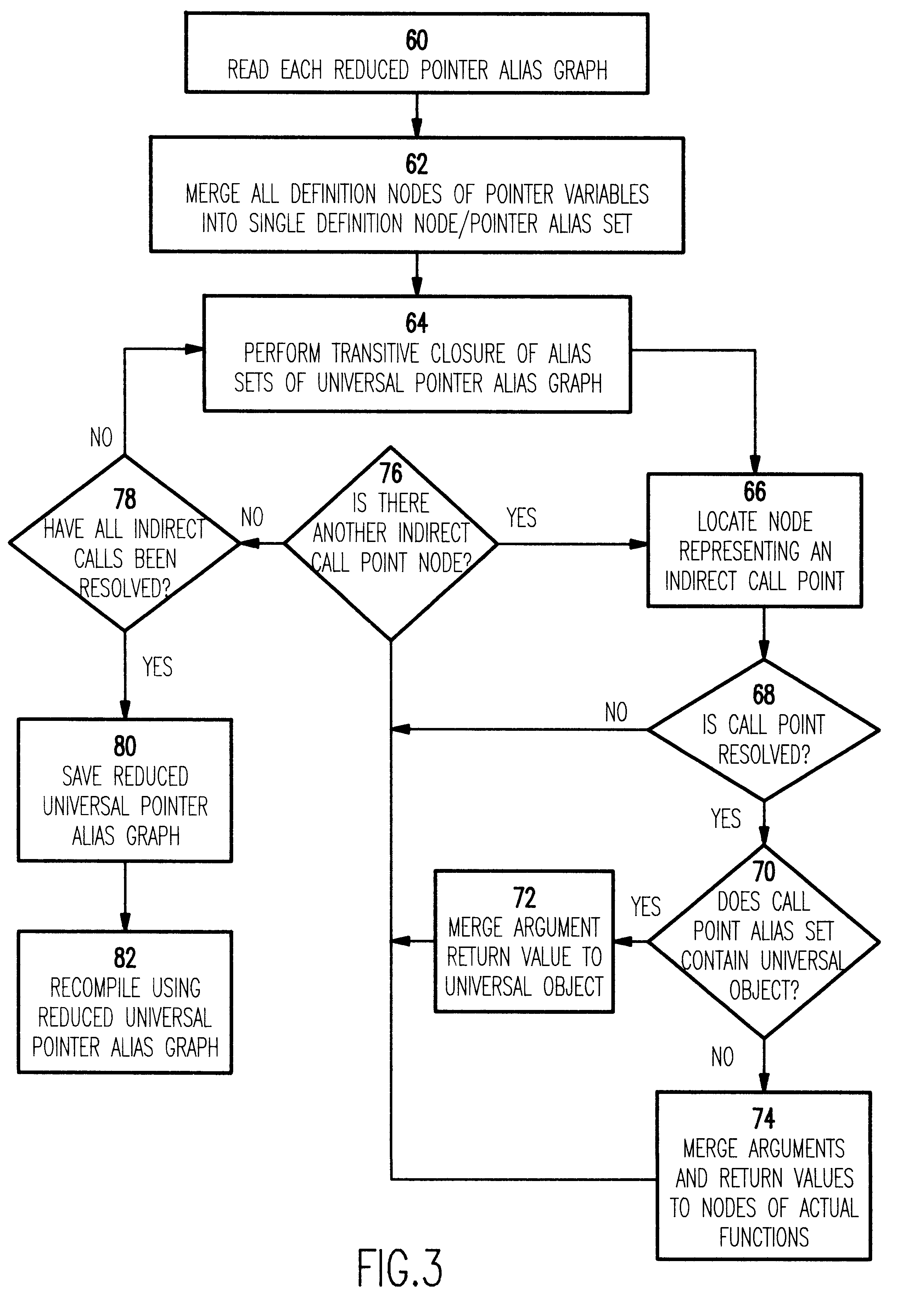Optimizing compilation of pointer variables in the presence of indirect function calls
- Summary
- Abstract
- Description
- Claims
- Application Information
AI Technical Summary
Benefits of technology
Problems solved by technology
Method used
Image
Examples
Embodiment Construction
In summary, the preferred method of the invention includes:
an initial compilation phase in which intraprocedural information about pointer variables referenced in each function of the program is gathered and saved in a data structure called the pointer alias graph;
a middle phase in which the pointer alias graphs from all the compilation units for the program are combined to form a universal pointer alias graph, and then transitive closure is performed on the universal pointer alias graph to produce a reduced graph containing the list of objects that each pointer variable can point to; and
a final phase in which all the files are re-compiled using the universal pointer alias graph as input, resolving all occurrences where pointer variables are de-referenced.
The preferred embodiment is described as it applies to pointer variables in C, a programming language that, in general, makes liberal use of pointer variables. However, it will be understood by those skilled in the art that the met...
PUM
 Login to View More
Login to View More Abstract
Description
Claims
Application Information
 Login to View More
Login to View More - R&D
- Intellectual Property
- Life Sciences
- Materials
- Tech Scout
- Unparalleled Data Quality
- Higher Quality Content
- 60% Fewer Hallucinations
Browse by: Latest US Patents, China's latest patents, Technical Efficacy Thesaurus, Application Domain, Technology Topic, Popular Technical Reports.
© 2025 PatSnap. All rights reserved.Legal|Privacy policy|Modern Slavery Act Transparency Statement|Sitemap|About US| Contact US: help@patsnap.com



